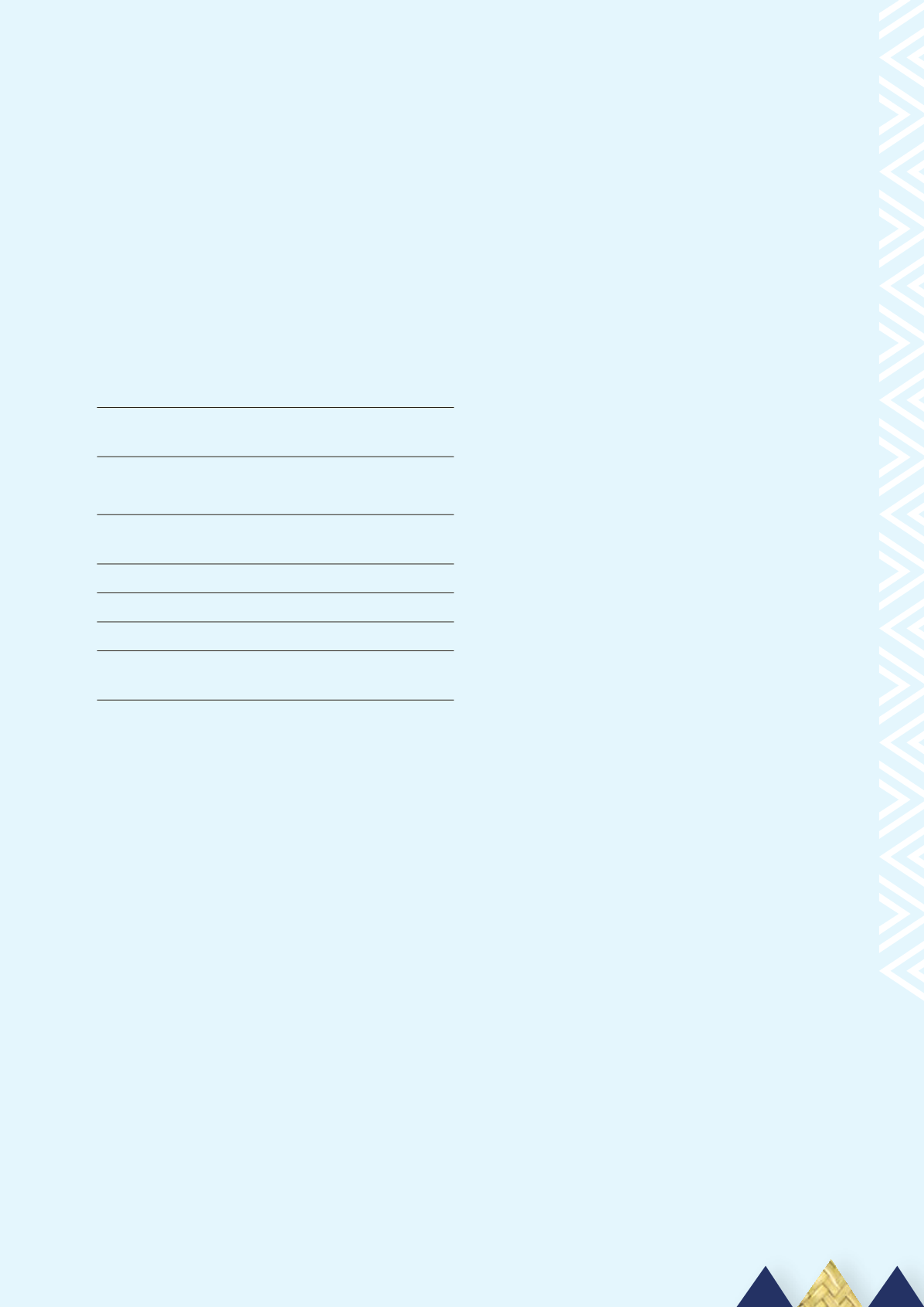
Annual report 2012
• Artwork is held at cost or valuation and is
not depreciated.
• All other asset classes are stated at cost less
accumulated depreciation and any accumulated
impairment in value.
Depreciation
Depreciation is provided on a straight-line basis on
all property, plant and equipment other than land and
artwork at rates that will write off the cost (or valuation)
of the assets to their estimated residual values over their
useful lives. The useful lives and associated depreciation
rates of major classes of assets have been estimated
as follows:
Buildings
15-65years
1.53%-6.66%
Leasehold
improvements
1-10years
10%-100%
Equipment
5 years
20%
Computers
2-4years
25%-50%
Furniture
and fittings
5 years
20%
Motor vehicles
5 years
20%
Waka
10 years
10%
Library books
10 years
10%
Library
subscriptions
2 years
50%
Leasehold improvements are depreciated over the
unexpired period of the lease or the estimated remaining
useful life of the improvements whichever is the shorter.
The residual value and useful life of an asset is reviewed
and adjusted if applicable, at the end of each financial
year end.
Revaluations
Land and buildings are revalued with sufficient regularity
to ensure that the carrying amount does not differ
materially from fair value and at least every two years.
The carrying values of revalued classes are assessesd
annually to ensure that they do not differ materially
from fair value. If there is evidence supporting a material
difference, then the off-cycle asset classes are revalued.
Property, plant and equipment revaluation movements
are accounted for on a class-of-asset basis.
The net revaluation results are credited or debited to
other comprehensive income and are accumulated to
an asset revaluation reserve in equity for that class of
asset. Where this would result in a debit balance in the
asset revaluation reserve this balance is not recognised
in other comprehensive income but is recognised in
the surplus or deficit. Any subsequent increase on
revaluation that reverses a previous decrease in value
recognised in the surplus or the deficit up to the amount
previously expensed and then recognised in other
comprehensive income.
Additions
The cost of an item of property, plant and equipment is
recognised as an asset if, and only if, it is probable that
future economic benefits or service potential associated
with the item will flow to Te Wānanga o Aotearoa and the
cost of the item can be measured reliably.
Work in progress is recognised at cost less impairment
and is not depreciated.
In most instances, an item of property, plant and
equipment is initially recognised at its cost. Where an
asset is acquired at no cost, or for a nominal cost, it is
recognised at fair value as at the date of acquisition.
Disposals
Gains and losses on disposals are determined by
comparing the proceeds with the carrying value of the
asset. Gains and losses on disposals are recognised in
the surplus or deficit.
When revalued assets are sold, the amounts included
in the revaluation reserve in respect of those assets are
transferred to retained earnings.
Subsequent costs
Costs incurred subsequent to initial acquisition are
capitalised only when it is probable that future economic
benefits or service potential associated with the item will
flow to Te Wānanga o Aotearoa and the cost of the item
can be measured reliably.
The costs of day-to-day servicing of property, plant and
equipment are recognised in the surplus or deficit as
they are incurred.
4. Intangible assets
Computer software
Computer software is separately acquired and
capitalised at its cost as at the date of acquisition. After
initial recognition, separately acquired intangible assets
are carried at cost less accumulated amortisation and
accumulated impairment losses.
Course development costs
Course development costs relate to development
of educational courses and are capitalised once
accreditation has been received and when it is probable
that future economic benefit arising from use of the
intangible asset will flow to the group.
Following initial recognition of course development
costs, the cost model is applied and the asset is carried
at cost less accumulated amortisation and accumulated
impairment losses.
81


